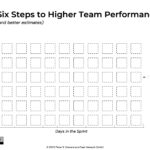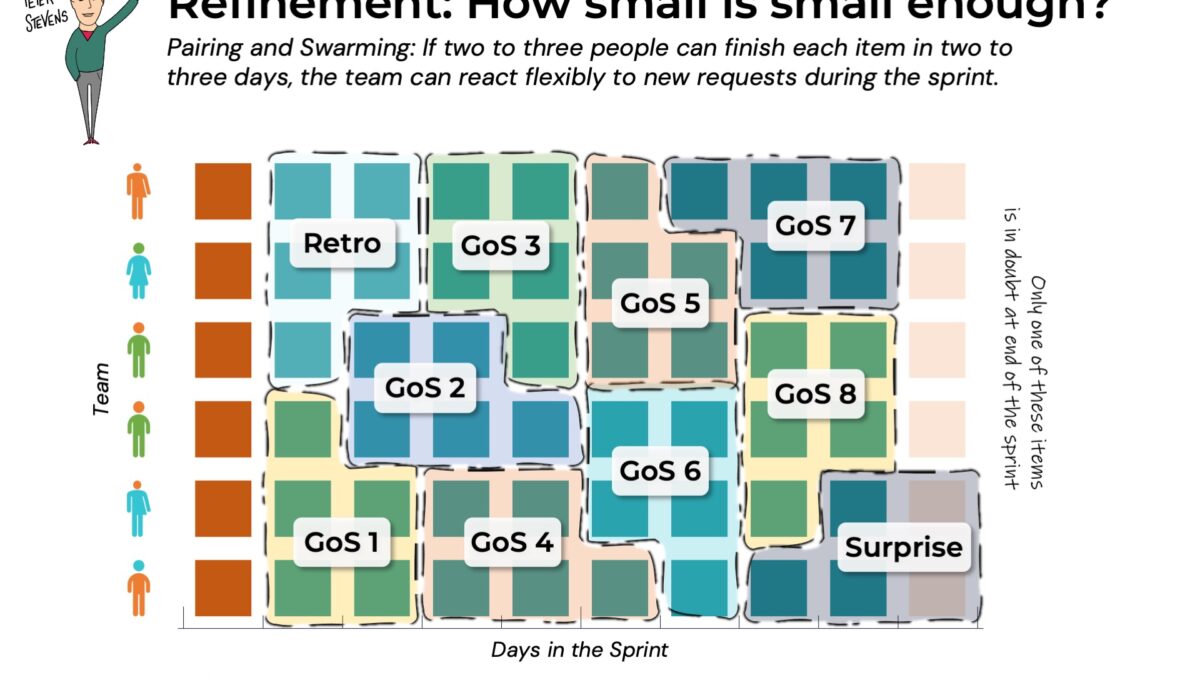
Six Steps to Higher Team Performance
31-10-2023
Five Steps to Estimate Your Backlog
02-11-2023Collaborate and keep your stories small to maximize flexibility and throughput in the Sprint. How small does a backlog item (“story”) need to be “ready” for the sprint? As with nearly all coaching questions, the correct answer is, it depends!
Refinement-Small-Enough-RC1Why is spillover a bad thing?
Scrum seeks to minimize work-in-progress at the end of a sprint to maximize flexibility in decision-making between the Sprint Review and the following Sprint Planning. If everything is done and nothing is in progress, then there is no waste changing direction. The more “spillover” you have at the end of the sprint, the more expensive it is to change direction.
Working Individually
If your stories are so big that you need most of the sprint to finish them, your team cannot be flexible with changes during the sprint. There is a danger they might not get done at all before the end of the sprint, so sprint results are unpredictable.
If your team members mostly work individually, a good rule of thumb is that each team member can finish two backlog items per sprint. That’s pretty small, but it means about mid-way through the sprint, you can probably handle a change without getting bent out of shape. For a team of 6, that would mean you would expect to finish around 12 items (2 per team member). Allocate a day for improvements that came from the retrospective, and you are left with roughly 4 days per item.
The downside of working individually is that you still have a lot of risk at the end of the sprint that half of the forecasted stories might not be ready at the end of the sprint.
More teamwork through pairing and swarming
The alternative is to collaborate in small groups of two or three people on each backlog item. By swarming, you get the stories done sooner and lower the risk of messy unfinished work at the end of the sprint.
In this case, even though the stories are a little bigger, the team can handle change in the requested items every few days without much disruption.
If two to three people need two or three days to finish each story, that translates to about 10 items per sprint. Dedicate one the retrospective and hold the last one available for surprises!





